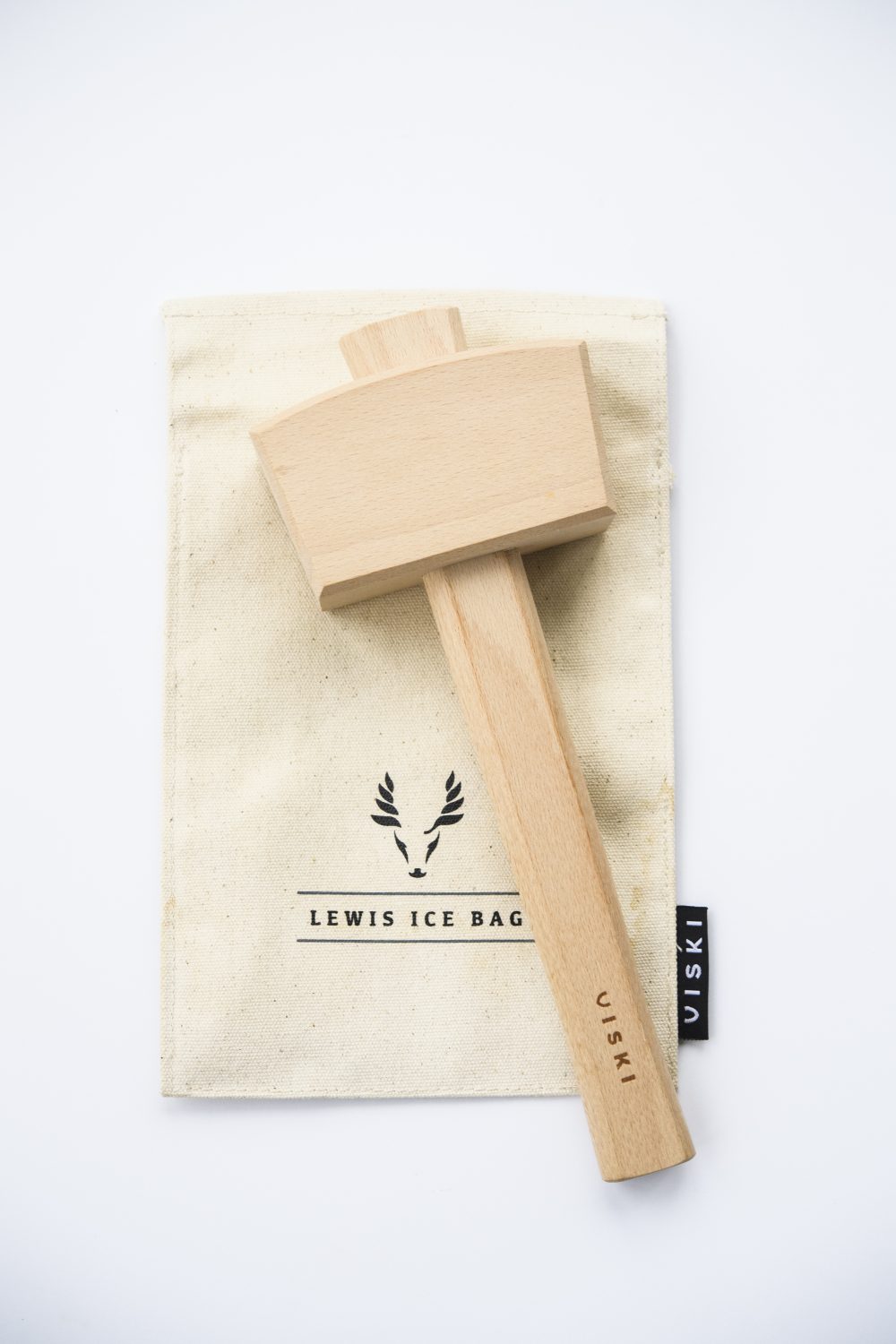
A Cleaner Solution to Crushed Ice
Crushed ice is key to well-built mint juleps, mules, mojitos and caipirinhas, but making it can be messy and loud. Professional bartenders often use blenders, but many home blenders aren’t up to the task or produce shavings that melt too quickly. Enter the Lewis bag, a canvas bag that contains the moisture and mess unavoidably created by walloping cubes of ice into pebbles. The sturdy canvas wicks away water, keeping the ice inside dry and making it a neater alternative to a plastic bag.
Canvas bags first became popular for making crushed ice during the 19th century, when bartenders discovered they could repurpose the bags banks used to carry coins for a more refreshing task. To make crushed ice, fill the bag with ice cubes, close the canvas lip and pound evenly with a mallet or a rolling pin; for shaved ice, pound more vigorously.
Homemade Espresso, Unplugged
While exploring London’s Borough Market, we discovered a new tool for making great espresso at home—the ROK Presso Manual Espresso Maker. The aluminum and stainless-steel press requires no electricity yet pressure to pull the perfect double espresso, complete with frothy crema. Fans of the Brit-made device—many of whom have posted how-to and hack videos—love it for the control it gives them over the finished cup. It works similar to electric devices, with coffee packed tightly into a portafilter. Hot water is poured into a reservoir above, then manually pressed through the grounds, making it easy to customize your brew. Available at rokkitchentools.com and Amazon starting at $130.
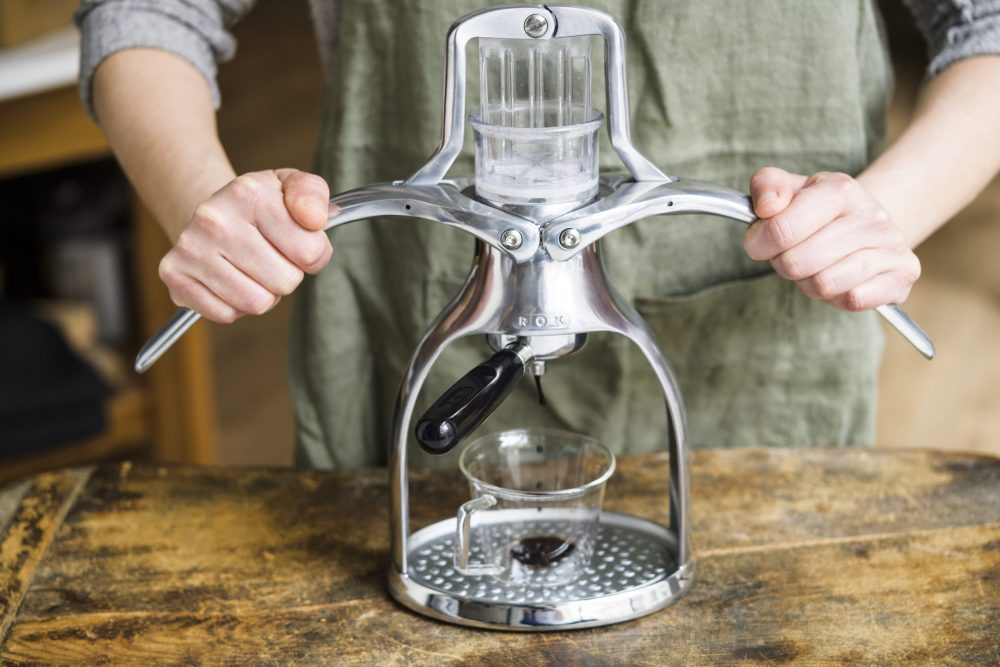
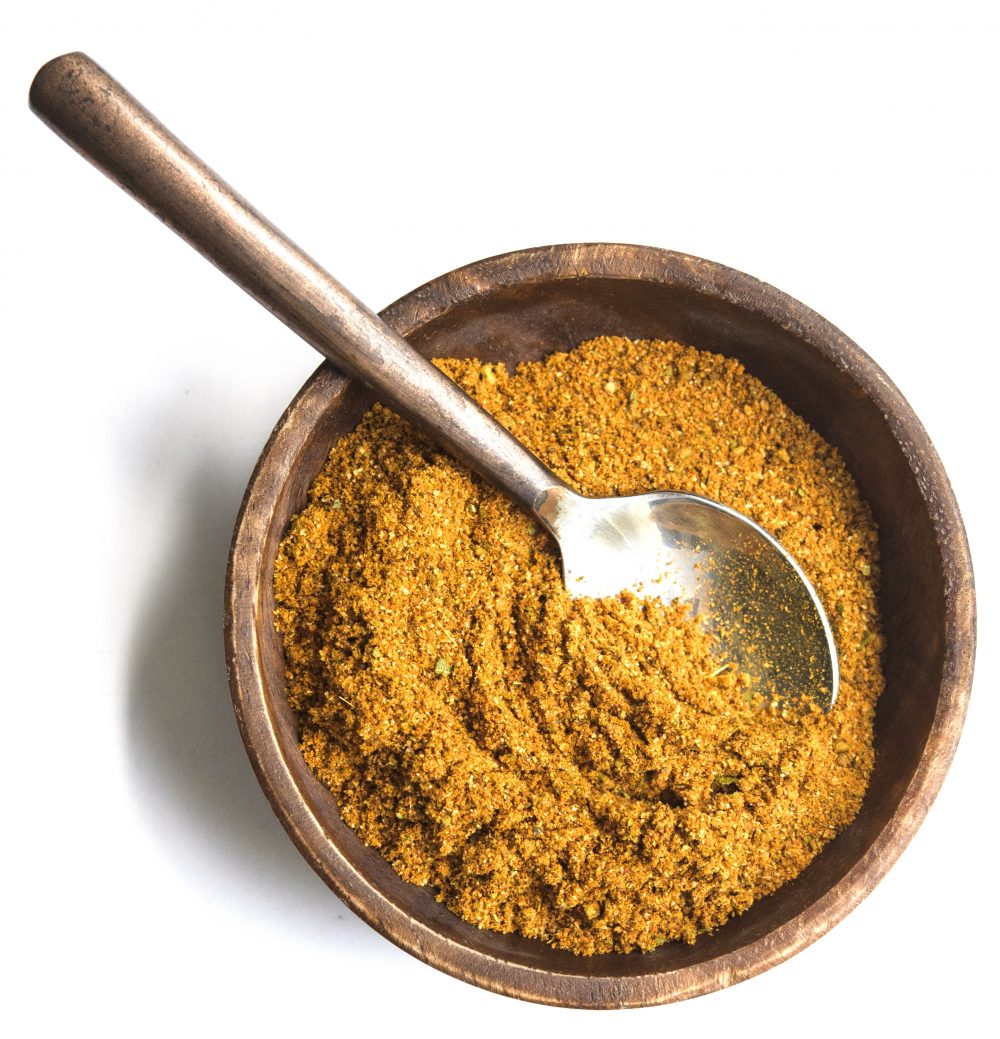
The Mother (in-Law) of All Curry Powders
In South Africa, curry powders get creative names intended to evoke favorites: mother-in-law and father-in-law curry blends, the former complex and savory, the latter a bit fiery. They aren’t common in the U.S., but we recreated the mother- in-law blend by mixing 1½ teaspoons ground cumin; 1¼ teaspoons each ground coriander, sweet paprika and granulated garlic; 1 teaspoon each ground cinnamon and black pepper; ¾ teaspoon each ground ginger, ground bay leaves, ground turmeric and dry mustard; and ½ teaspoon each onion powder and ground fennel. Use it mixed with kosher salt as a rub for roast chicken. Or make an easy beef curry: Toss 1-inch chunks of sirloin tips and 1 sliced yellow onion with 5 teaspoons of the curry blend, 2 teaspoons salt and 2 tablespoons neutral oil. Brown in a large skillet, then simmer with ¼ cup water for 10 to 15 minutes.
Fizzy, Herbal and Green: Tarragon Soda from Georgia
In the nation of Georgia, people sip fruity sodas in flavors like pear, orange cream, apple, raspberry and—most traditional of all—tarragon. Sweet-tart, with a mild licorice aroma, on a stomach-settling elixir called tarkhun. It was invented by a Georgian pharmacist in the 1880s and spread throughout the former Soviet republics. We first tasted tarkhun at a café specializing in kachapuri, Georgia’s boat-shaped, egg-topped cheese bread bowl; the sugary soda was the perfect complement.
You can find tarkhun on Amazon for $28; it’s also sold in Russian markets in the U.S. Or make your own: Simmer ¾ cup white sugar and ½ cup water until the sugar dissolves, then add 1 cup fresh tarragon leaves, 1 teaspoon aniseed, 1 tablespoon grated lemon zest, 1/8 teaspoon baking soda and a pinch of kosher salt. Boil for 1 minute, then transfer to a blender. Cool for 5 minutes, then blend with ½ cup ice until smooth. Refrigerate for about 1 hour, then strain and stir in ¼ cup lemon juice. For each soda, fill a tall glass with ice, add 2 ounces of syrup and top with seltzer.
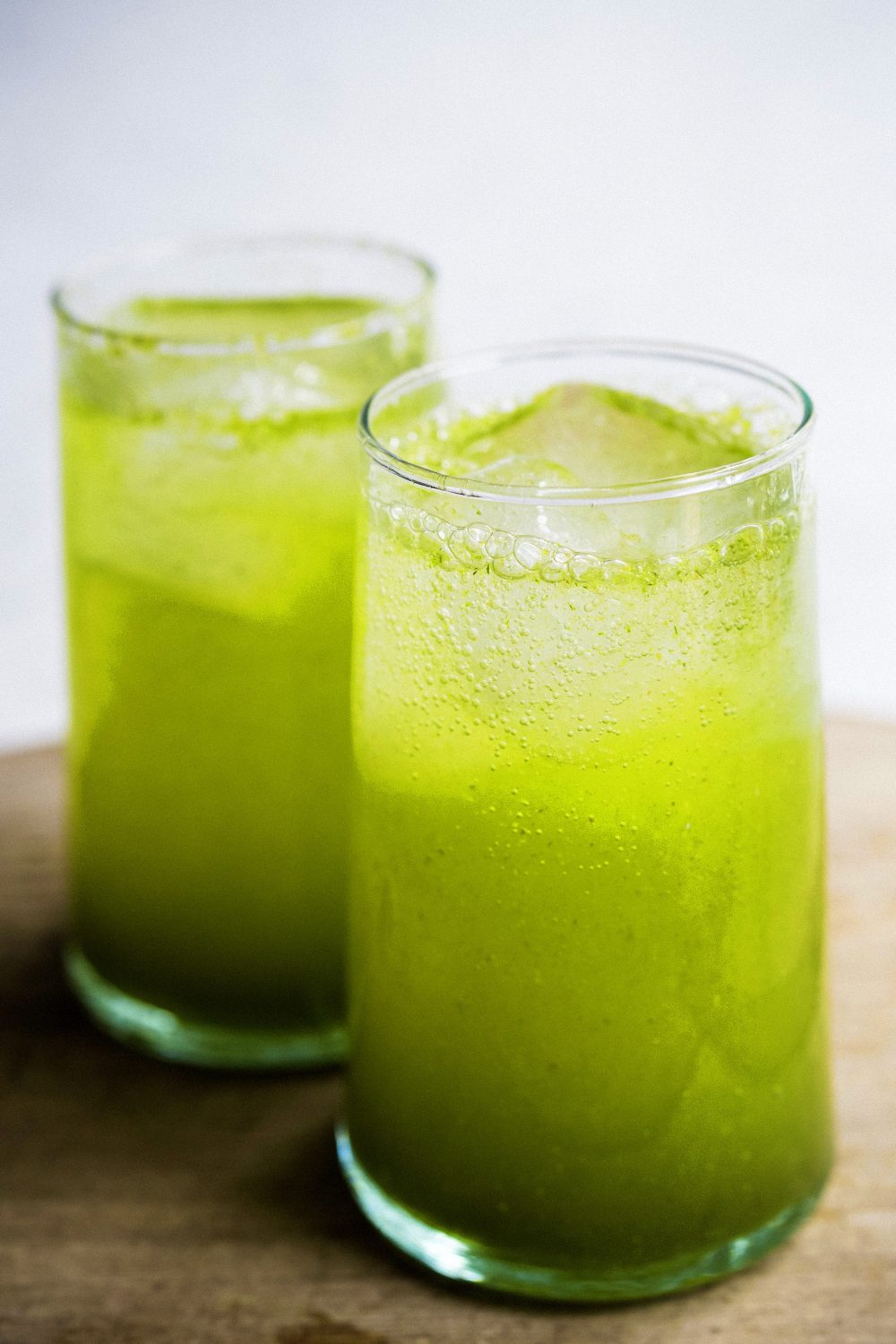
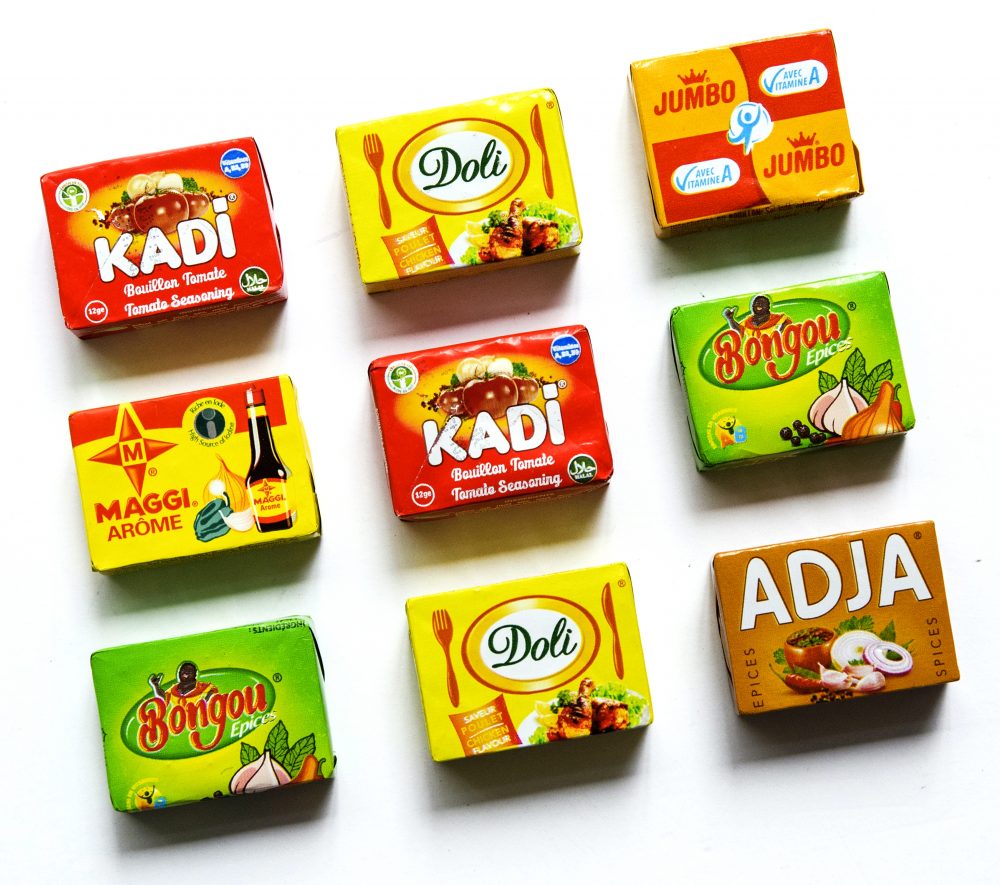
Big Flavor. Squared.
Created more than 100 years ago, the Maggi bouillon cube has become a staple of West African cooking. It may be the best-known brand, but at the Marché Tilène, an open-air market in Dakar, Senegal, there are many brands of similar tablets in brightly colored packaging—Kadi, Doli, Adja and Bongou. That’s because, unlike in the U.S., the bouillon cube is not a hidden secret in Africa. One or two tablets are added to gumbos, stews and soups, with no implication that one is taking a shortcut. So maybe it’s time to unwrap a cube of Maggi for your next batch of beef stew. Even if you want to keep it a secret.
Q: “What is the best oil to use for high- heat searing? Does smoke come just from the oil or from the food in the pan?” — Matthew Ward, Richmond, Virginia
To determine the best oil for searing, we consulted various sources on smoke points, then seared strip steaks in seven oils: avocado, refined coconut, canola, grapeseed, safflower, extra-virgin olive and refined olive. We timed how long each took to begin smoking over medium-high, temping the oil with an infrared thermometer. Then we seared the steaks.
None of the oils smoked at precisely the points we referenced. The avocado oil began to smoke at 410°F, more than 100°F below the cited 520°F. On the other hand, extra-virgin olive, coconut, canola and grapeseed oils were all able to be heated above their cited temperatures before they smoked.
Why? An oil’s smoke point is a matter of refinement. Oil smokes when tiny particles suspended in it are heated. The more refined an oil, the fewer particles it contains and the higher heat it can handle. This is why different refinements of a single type of oil—such as extra-virgin and refined olive oil—have different smoke points. The takeaway: An oil’s smoke point should be considered suggestive, not exact.
Overall, our favorite oils for this kind of high-heat cooking were refined coconut, safflower and grapeseed, each of which produced deep searing and flavorful crusts on the meat.
As for the smoke coming from the pan, that’s produced by heat breaking down the cooking oil into free fatty acids and glycerol, the latter of which further breaks down into a volatile compound called acrolein, which creates visible smoke.



